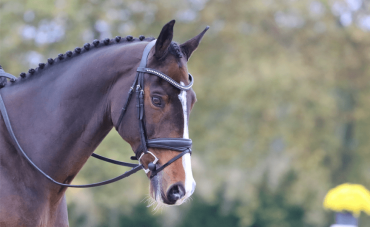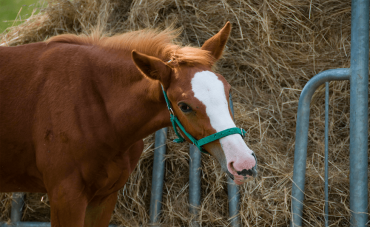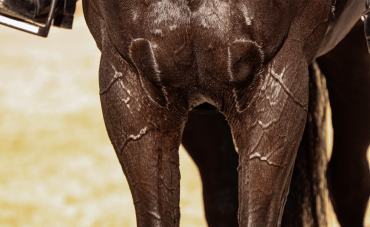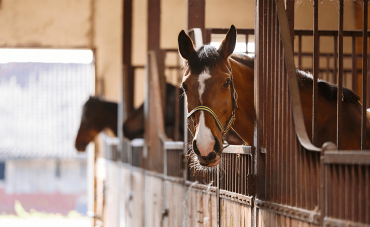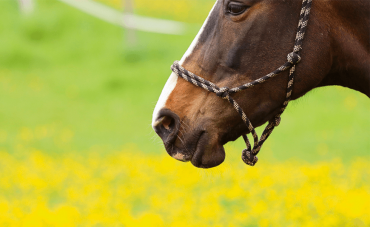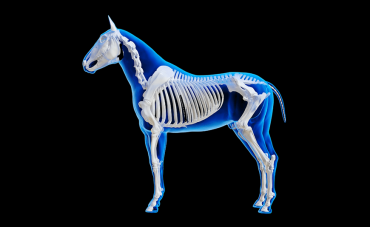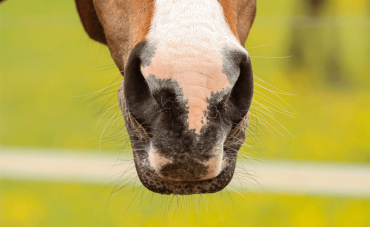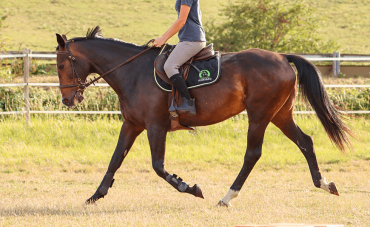You may have already heard of osteochondrosis or OCD, which is a common osteoarticular condition in young horses. Let’s give you an overview of osteochondrosis for better understanding.
What is osteochondrosis in horses?
Osteochondrosis belongs to the category of Juvenile Osteochondral Conditions, which correspond to all orthopaedic disorders of horses during their growth and development.
Osteochondrosis is therefore a pathology that develops during the growth of the horse, generally between 3 and 20 months old. As you may know, at birth, the long bones of the foal (those that connect the joints) are not really bones yet, as they are made of cartilage. During growth, this cartilage will be replaced by bone. In the case of osteochondrosis, there will be disturbances during the transition from cartilage to bone which will give rise to osteoarticular malformations which can be of different types:
- Osteochondrosis dissecans: This corresponds to the detachment of an osteo-cartilaginous fragment which is found in the joint. This fragment can lead to local inflammation in the joint, which is called osteochondritis dissecans.
- Subchondral bone cysts: This refers to the presence of a cyst in the subchondral bone (the part of the bone directly under the articular cartilage).
Many joints can be affected but the most affected by osteochondrosis are those of the hock, stifle and fetlock. It should also be noted that the joints of both limbs are usually affected at the same time (both hocks for example).
Osteochondrosis can lead to the development of osteoarthritis if left untreated. Indeed, the chronic inflammation caused by the fragment or cyst can lead to the development of bone remodelling and therefore osteoarthritis. We will come back to it later on, but if this pathology develops in growing horses, it may not be discovered until adulthood.
Causes of osteochondrosis in horses
There are several causes that can lead to osteochondrosis in young horses:
Feeding of the broodmare and foal
Feeding is a very important risk factor for the development of osteochondrosis. This concerns not only the young horse's diet but also that of its mother during gestation and lactation periods. For the broodmare it is mainly the minerals that are involved.
Indeed, studies have shown that a deficiency or an imbalance between calcium and phosphorus increases the risk of osteochondrosis in the foal. In addition to this, for the growing foal, a diet too rich in energy and especially in starch is also a risk factor. A good mineral balance is also essential for the foal.
Finally, a diet adapted to the foal will prevent him from becoming too fat. In overweight foals, the joints, which are still very fragile, will be subjected to this additional load and this can disturb the whole ossification process.
Genetics
Numerous studies have shown that certain breeds such as the Selle Français, Thoroughbreds or French Trotters have a genetic predisposition to osteochondrosis. In addition, these breeds do not have the same affected joints. Thus, Trotters would have a higher risk of having osteochondrosis in the hock.
Genetics being an important risk factor, breeding stallions are often evaluated on their "osteoarticular status" in order to assess the risk for their offspring to develop osteochondrosis.
Physical activity of the young horse
The physical activity of the foal during its first months/years of life is also a risk factor for osteochondrosis. Thus, too much physical effort at a very young age will be detrimental to the proper development of the bones. Too much activity will cause trauma to young joints and growing bones and thus increase the risk of osteochondrosis.
It is important to note that studies have also shown that regular and relatively moderate physical activity can reduce the risk of osteochondrosis. It is therefore important for the foal to be able to move for better growth while limiting certain constraints (floors that are too hard, slippery floors, etc.).
Hormonal factors
This is a rarer cause but in some horses with limited thyroid hormone production, the risk of osteochondrosis is greater.
Symptoms of osteochondrosis in horses
As with many conditions, the symptoms will differ from one horse to another. For some horses, osteochondrosis will never cause any discomfort, or only at certain times, while for others the discomfort will be more severe and the symptoms more noticeable.
The most common symptoms of osteochondrosis include:
- Swelling of the affected joint. This is one of the most common signs of inflammation in the joint. Note that this swelling does not always mean pain for the horse. The swelling is due to an increase in the amount of synovial fluid that will distend the joint. This increase is most often due to the OCD fragment (also known as a chip) which will create inflammation as it moves around the joint.
- From one horse to another this lameness can be more or less important and it is even more observable during work. The lameness can be due to : o pain when the fragment is pinched between the bones o pain from distension of the joint o pain from the weight of the horse on the painful bone which is affected by a cyst o osteoarthritis that may have developed as a result of the chronic inflammation created by the osteochondrosis
- Joint pain. The affected joint may be sensitive to manipulation mainly when it is bent. The pain may be due to synovial distension which makes bending more painful, but also because the fragment becomes trapped between the bones in the joint when it is mobilised.
Diagnosis of osteochondrosis in horses
Osteochondrosis will be diagnosed by your veterinarian. Usually, he will start with a full static locomotor examination to look at your horse's limbs, looking for any joint swelling, tensed areas or hot spots. Your veterinarian may perform stationary limb flexions to see if there is a painful reaction to the restraint.
He will then perform a moving examination where he can observe your horse moving in a straight line, in a circle and on different grounds (hard, soft...). He will also be able to perform flexion tests: bend the limb to stress the joint and trot the horse to see if this stress causes lameness. If the horse is limping it means that the joint is painful.
Once the vet has an idea of where the problem is, he can carry out further tests such as an x-ray or ultrasound to pinpoint the location of the injury and to assess its severity.
If your veterinarian finds osteochondrosis in one of your horse's joints, he or she may suggest that you look at the opposite limb because, as we said earlier, it is a condition that is bilateral and therefore usually affects both limbs (front or back). The evaluation of "all" the lesions allows your veterinarian to find a treatment and a more adapted management for your horse.
Treatment of osteochondrosis in horses
Once the diagnosis has been made, your vet will be able to offer two main types of treatment depending on the type of osteochondrosis, the age of your horse and its level of activity.
Surgical treatment
This type of treatment involves removing the osteochondrosis fragment from the joint by performing an arthroscopy.
Arthroscopy is an examination that is performed under anesthesia. It consists of introducing a small endoscope, to which a camera is attached, into the joint. In addition to allowing the articular cartilage and the joint capsule to be seen, it will allow the fragment to be visualised. Using small instruments, it will then be possible to remove the problematic piece or pieces in order to clean the joint.
One of the main advantages of this technique is that in addition to removing the fragment and cleaning the joint, it allows a true overview of the health of the entire joint (cartilage, fluid and synovial membrane). This surgery has the advantage of being relatively short in duration, having relatively few complications and having a favourable prognosis for young horses destined for a sporting career. Following this operation, the horses will be rested in the stable and, if necessary, given anti-inflammatory.
If the osteochondrosis is in the form of a subchondral cyst, surgery is also possible. There are several techniques depending on the size of the cyst and its position. The aim is to fill the hole that the cyst will cause in the bone. Some techniques consist of curettage to clean the cyst and prevent it from growing. It is also possible to place a screw or certain products in the cyst to fill it.
This surgical treatment is relatively expensive, which may lead some owners to opt for the second type of treatment instead.
Conservative treatment
For this type of "treatment", there will be no surgical intervention. Instead, the horse's activity is adapted to prevent the osteochondrosis lesions from getting worse. In this situation the intensity of work will be adapted according to the inflammation present in the joints and therefore the horse's symptoms. In addition to activity management, the veterinarian may also prescribe anti-inflammatory medication, which may or may not be paired with infiltrations to make the horse more comfortable.
The aim of this conservative treatment is to monitor the horse and have regular veterinary follow-up to avoid complications from the osteochondrosis lesion(s).
In the case of the conservative approach and the surgical solution, supplementation with chondroprotectors such as Ekyflex Arthro EVO can help to support all the elements of the joint (cartilage, subchondral bone and synovial fluid) and thus preserve your horse's joint comfort to the maximum.
As you can see, there are many factors to consider when choosing a treatment for osteochondrosis:
- The type of injury: when the fragments are small enough, depending on their position and the affected joint, they may be tolerated and not cause any particular problems in the joint. Some horses live with "loose" fragments in the joint and can be quite active.
- Symptoms: If your horse has a severe limp or swelling, surgery is often recommended. If the horse has no particular symptoms and the injury(s) are discovered "by chance", conservative treatment will be the most appropriate
- The sporting objective: if you wish to compete with your horse, the presence of osteochondrosis, even without symptoms, can prevent your horse from performing well.
- Age: In the case of surgery, it is often advisable to wait until the young horse is 2 years old. Indeed, fragments can be present when the foal is a few months old and not be there anymore later. However, if the fragment can damage the cartilage, it may be important to act before the age of 2. On the contrary, if your horse is over 15 years old when you discover the fragment, the value of surgery may be discussed.

